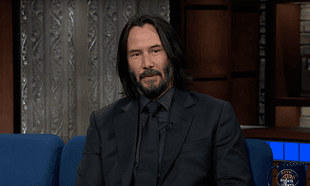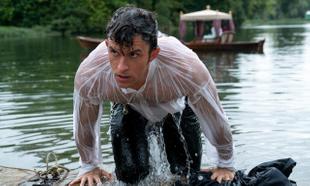Although 'Halloween Kills' has received something of a critical pummeling, audiences never the less turned out in huge numbers (for a pandemic audience, anyway) for it on its opening weekend.
In the US, 'Halloween Kills' scored an impressive $50 million opening weekend and was the highest R-rated opening weekend in the current circumstances. Yet, still remains is the lukewarm response. On Rotten Tomatoes, it has a 39% score compared to the 2018 movie, which had a 79% score. From us, 'Halloween' received four stars, while 'Halloween Kills' scored just two and a half.
For a genre that is so prodigious in its output, most horror sequels tend to be pretty poor. There are, of course, a few examples of excellent follow-ups and ones that even surpass the original. You'll note that we used 'Evil Dead 2' for our header image. 2018's 'Halloween' was a sequel to 1978's 'Halloween', retconning the intervening movies as "urban legends" for the sake of convenience. 'Scream 2' was a fascinating riff on the original, while 'Aliens' shifted 'Alien' away from the "haunted house / spaceship" setting to a much wider field of play. Yet, typically speaking, horror sequels never live up to the original. Sequels in other genres can vary in quality, but with horror, it's probably the safest bet to assume that the sequel is going to fall short of the original.
Why is that?
Horror, as we mentioned, is an extremely prodigious genre. In 2018, there were approximately between 170 and 200 horror movies released across cinemas, streaming services, and rental platforms. They're cheap, easy to make, and audiences tend to give them a shot because, well, audiences like to have a visceral reaction when watching something. Much like comedy, horror and being scared is involuntary. You don't have to think about it, it just happens or it doesn't. When you're not expecting a serial killer to appear behind someone, or the monster does something horrific and unexpected, that first reaction is precious and fleeting. What makes good horror is the ability to create atmosphere, and that's something that sustains with repeat viewings. John Carpenter's 'The Thing', for example, is a perfect example of creating real tension, paranoia and dread on screen. Everyone's exhausted, the monster can take anyone's form, they're all slowly going mad from second-guessing each other, and that bleeds out onto the screen. You see that every time you watch it.
Generally speaking, sequels only get put into production when the original makes money. It's incredibly rare for any studio to greenlight a sequel - be it a horror, a sci-fi, a comedy - unless the original made money. Studios like sequels because if the original made money, the belief is the sequel will do the same. Marketing costs are reduced because audiences are already aware of the movie and don't need to be reminded of it. Not only that, producers of the original movie normally have lucrative bonuses attached to their remuneration that kick in when a sequel enters production. Whether it's good or bad.
That's the why of how sequels are made.
But to get more specific to horror, and specifically why they mostly tend to suck, we have to dig a little deeper. As we mentioned, horror as a genre and as an experience is one that almost always relies on gut reaction. You see it, it shocks you, you move on. In any given horror movie, you're working with a singular antagonist, and chances are the writer and director are going to do their damnedest to ensure the very best work goes out the first time with the resources that they have available to them, namely time and budget. When resources are tight, that's when creativity kicks in and brings out some genuine frights and scares that you wouldn't expect. Not only that, you're seeing it for the first time as well.
So, if we've got all those scares lined up in the first one, what do you do in the second one, or the third one?
If it's a slasher like 'Halloween', you have to use the same character again. If it's a monster movie, it's the same thing. The nature of the beast is that you're stuck with the same thing that scared people the first time around, and now you've got to try and scare people again. That's an exceptionally tough ask for any writer or director. After all, they've poured all their energy into making the first one great that it's only natural for the tank to be empty on the second. More to the point, audiences have now become inured to the very thing that scared them in the first place. They know that the serial killer or the creature is going to survive, or that the cast is going to be picked off one by one, so how can you be frightened if it's going to be the same thing again and again?
It's why horror sequels generally tend to have diminishing returns after the first one. 'A Nightmare on Elm Street', for example, somehow managed to keep rolling well into the early aughts, and even had a reboot with Robert Englund replaced with Jackie Earle Haley in 2010. Yet, unless you're a serious horror aficionado, odds are you probably couldn't name any of the sequels or explain what they're about. The same goes for 'Halloween'. Indeed, the original plan for 'Halloween' as a franchise was for it to become an anthology of loosely connected movies, as John Carpenter had no interest in going over the same material again and again. Carpenter's view was that the 'Halloween' series could be something along the lines of 'The Twilight Zone' or 'Night Gallery', with each subsequent movie telling a story on Halloween night that wasn't necessarily linked to the previous one. 'Halloween III: The Season of the Witch' didn't feature Michael Myers at all, and since the movie wasn't a commercial success, he was quickly reintroduced for 'Halloween IV' along with a confusing subplot involving a Druid cult. Really.
It's interesting, however, that horror as a genre is one that inspires unparalleled devotion - moreso than comedy, drama, maybe even more than straight action or sci-fi. It's a genre that's built on cult classics, movies that are ignored or underappreciated in their time are reappraised years later and given a fresh vein of life. The aforementioned 'Halloween III', for example, is widely considered a cult classic now. The same goes for 'Evil Dead II'. So while critics may consider horror sequels to be cheap imitations, horror hounds eagerly eat them up.
That's why they still are made.









































































